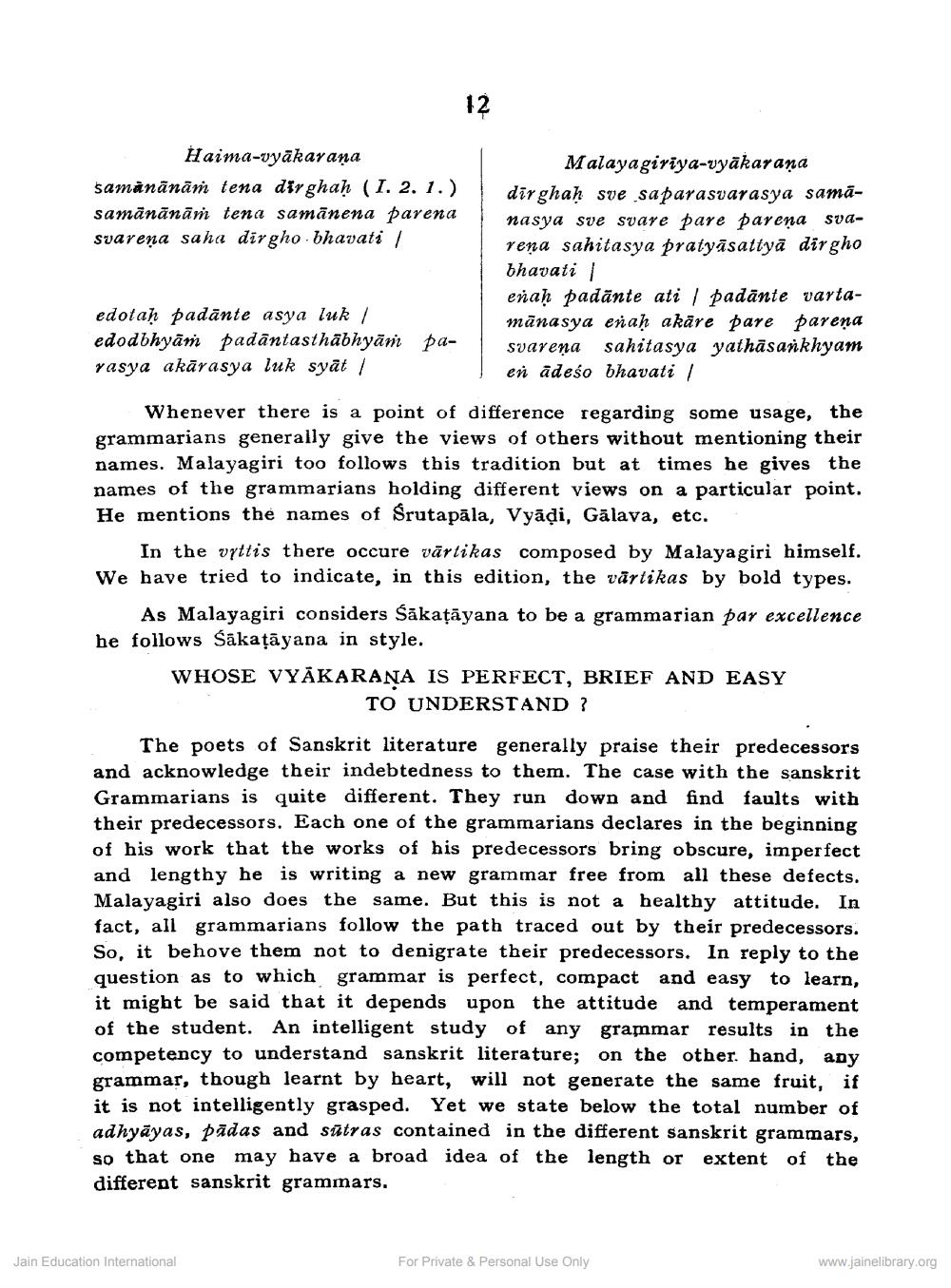________________
Haima-vyaharana
samanānām lena dirghaḥ (I. 2. 1.) samānānāṁ tena samanena parena svarena saha dirgho bhavati |
edotaḥ padante asya luk | edodbhyam padāntasthābhyām parasya akarasya luk syal
12
Malayagiriya-vyakarana
dirghaḥ sve saparasvarasya samanasya sve svare pare parena svarena sahitasya pratyasattya dirgho bhavali |
eñaḥ padante ati | padante vartamānasya eñaḥ akāre pare parena svarena sahitasya yathasankhyam en adeso bhavati /
Whenever there is a point of difference regarding some usage, the grammarians generally give the views of others without mentioning their names. Malayagiri too follows this tradition but at times he gives the names of the grammarians holding different views on a particular point. He mentions the names of Srutapala, Vyadi, Galava, etc.
In the vyttis there occure vārtikas composed by Malayagiri himself. We have tried to indicate, in this edition, the vārtikas by bold types.
Jain Education International
As Malayagiri considers Sakațayana to be a grammarian par excellence he follows Śākaṭāyana in style.
WHOSE VYAKARAŅA IS PERFECT, BRIEF AND EASY
TO UNDERSTAND?
The poets of Sanskrit literature generally praise their predecessors and acknowledge their indebtedness to them. The case with the sanskrit Grammarians is quite different. They run down and find faults with their predecessors. Each one of the grammarians declares in the beginning of his work that the works of his predecessors bring obscure, imperfect and lengthy he is writing a new grammar free from all these defects. Malayagiri also does the same. But this is not a healthy attitude. In fact, all grammarians follow the path traced out by their predecessors. So, it behove them not to denigrate their predecessors. In reply to the question as to which grammar is perfect, compact and easy to learn, it might be said that it depends upon the attitude and temperament of the student. An intelligent study of any grammar results in the competency to understand sanskrit literature; on the other hand, any grammar, though learnt by heart, will not generate the same fruit, if it is not intelligently grasped. Yet we state below the total number of adhyayas, padas and sairas contained in the different sanskrit grammars, so that one may have a broad idea of the length or extent of the different sanskrit grammars.
For Private & Personal Use Only
www.jainelibrary.org




